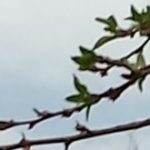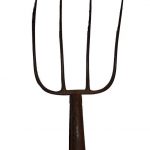How to Spring into Life
Reflections and Encouragement for Times When Growth and Change aren’t Easy
Next week the Equinox will arrive whether we dread it or welcome it. As I inhabit the Northern  Hemisphere, I will be welcoming spring. Do you savor the warmth of the sun after the cold winter, as I do? Do you enjoy seeing trees bud and crocuses, daffodils and tulips bloom, like I do? Maybe you’re a CASIGY™, that is, a Creative, Acutely Aware, Super-Sensitive, Intense, and/or Gifted “You”, and you are intensely aware and tuned in to such things.
Hemisphere, I will be welcoming spring. Do you savor the warmth of the sun after the cold winter, as I do? Do you enjoy seeing trees bud and crocuses, daffodils and tulips bloom, like I do? Maybe you’re a CASIGY™, that is, a Creative, Acutely Aware, Super-Sensitive, Intense, and/or Gifted “You”, and you are intensely aware and tuned in to such things.
Do these seasonal changes prompt you to think about making changes in your life, like they do for me? If so, I invite you to keep reading my Reflections and Encouragement for Times When Growth and Change aren’t Easy.
This year Colorado has missed much of the rain and snow that much of the United States has suffered. Here, we’re wondering how it was that winter passed us by while the rest of you may be wondering, “Will spring never come?” And if you’re in the Southern Hemisphere, you may wonder what kind of winter lies ahead of you.
Seeing signs of new life such as the returning birds singing in the mornings and building their nests reminds me that
spring always comes.
No matter how cold, long and hard the winter is, spring always returns. No matter how long the wintry tough times in our lives seem to stretch out, we can be encouraged by the return of spring to the landscape. We can know that when we have tough, wintry times in our lives, better weather always comes. Spring always returns in its time. Not in our time, but in its own timing.
As I see new spring growth coming in tiny, tender shoots, it helps me to notice new growth in my life, too. New growth,  especially sustainable growth, often comes in almost imperceptible ways. I do one small favor for someone. I clean out one drawer. I pass up one cookie. I make one phone call. I climb one flight of stairs. Not big things, but when I acknowledge them as a part of a larger change, I am inspired and encouraged to “keep on keeping on” each day. When I see each teeny step separately, they seem like nothing. But when I see them as tiny, tender shoots in a whole garden of fresh, new growth in my life, then I am encouraged to keep them coming, tiny tender shoot by tiny tender shoot.
especially sustainable growth, often comes in almost imperceptible ways. I do one small favor for someone. I clean out one drawer. I pass up one cookie. I make one phone call. I climb one flight of stairs. Not big things, but when I acknowledge them as a part of a larger change, I am inspired and encouraged to “keep on keeping on” each day. When I see each teeny step separately, they seem like nothing. But when I see them as tiny, tender shoots in a whole garden of fresh, new growth in my life, then I am encouraged to keep them coming, tiny tender shoot by tiny tender shoot.
When I see new growth this way, I can also protect it from the harsh, unpredictable weather that spring can bring. Some plants, like bulbs or pansies, take the weather changes of spring just fine. Others don’t, and need to be started indoors and moved outside when the weather is more predictable. It’s important for us to know what we’re growing in our lives, and to respond accordingly. We can bring our inner plants of courage indoors when cold, harsh “life-weather” comes. We can cover our inner plants of positive self-esteem them when it snows metaphorically. We can grow our self-care habits in a greenhouse for a while, if needed. New psychic growth, just like garden plants, can be vulnerable and may need protection until the weather evens out, and the plants mature, too.
 When I see new growth this way, I can also protect it from the harsh, unpredictable weather that spring can bring. Some plants, like bulbs or pansies, take the weather changes of spring just fine. Others don’t, and need to be started indoors and moved outside only when the weather is more predictable. It’s often important for us to know what we’re growing in our lives, and to respond accordingly.
When I see new growth this way, I can also protect it from the harsh, unpredictable weather that spring can bring. Some plants, like bulbs or pansies, take the weather changes of spring just fine. Others don’t, and need to be started indoors and moved outside only when the weather is more predictable. It’s often important for us to know what we’re growing in our lives, and to respond accordingly.
- We can bring our inner plants of courage indoors when life’s cold, harsh “weather” comes.
- We can cover our inner plants of positive self-esteem them when it snows metaphorically.
- We can grow our self-care habits in a greenhouse for a while, and take them out into harsher elements of cold criticism or hot judgement, for example.
As I type this, I realize that some of what counseling provides is a safe, protective place to get the new growth started and rooted, as well as a master gardener to guide the process. Day by day, I help people prepare their inner gardens for planting, by digging up the ground of their lives, carefully separating the plants they want to keep from the weeds, pulling out those pesky weeds, working deeply around the roots to extract as much of them as we can, even while knowing that we can never get them all. Often we need to augment the soil of their hearts with caring, nurturance and nourishment, and moisten it with tears of sadness, grief and even of joy. Then we are ready for the planting to begin – burying seeds in the dark earth. But wait, there’s one more thing. We need fertilizer for our inner gardens. Nature has provided plenty of it, right where we least expected it.
 Have you noticed that especially in the spring it’s messy in the parks and woods, and maybe in your own yard? There may be old, dead leaves, pine needles, cat tail stalks and grasses everywhere. I sometimes wonder why nature doesn’t clean up its own back yard better? On second thought, maybe it does. I also see birds gathering some of this mess to build their new nests. That gets me to thinking about how the rest of it goes to fertilize this year’s new growth. And we thought we invented recycling.
Have you noticed that especially in the spring it’s messy in the parks and woods, and maybe in your own yard? There may be old, dead leaves, pine needles, cat tail stalks and grasses everywhere. I sometimes wonder why nature doesn’t clean up its own back yard better? On second thought, maybe it does. I also see birds gathering some of this mess to build their new nests. That gets me to thinking about how the rest of it goes to fertilize this year’s new growth. And we thought we invented recycling.
I don’t suppose that you have any messes in your life. I certainly have plenty in mine. But as a CASIGY™, that is, a Creative, Acutely Aware, Super-Sensitive, Intense, and/or Gifted – “You”, we can easily get caught up in perfectionism, expecting that all of our lives should be picture-perfect. When I get caught up in too-high expectations, it can help me to be brought back down to earth by remembering how nature deals with its messes.
Every spring, my father-a life-long gardener, used to find a farmer who had extra manure, and buy it by the trailer load, saying “manure makes the best fertilizer”. He’d haul it home, mix it with compost and spread it on his garden. Compost is nature’s old messes chopped up, mixed together, and allowed to age. And manure comes from well, you know. To a dyed-in-the-wool perfectionist like me, this seems strange–messes and manure mixed together become fertilizer–the best there is, no less. So when we want to nurture new growth in our lives, it might serve us well to remember Nature’s Best Fertilizer.
 But how does manure transform into fertilizer? Through the magic of the Sunshine Wagon. Let me explain. When I was three and four years old, we lived in a farm house in northern Wisconsin. I loved to play outside by a row of lilac bushes and in the apple orchard. I was also fascinated by what happened in the barnyard.
But how does manure transform into fertilizer? Through the magic of the Sunshine Wagon. Let me explain. When I was three and four years old, we lived in a farm house in northern Wisconsin. I loved to play outside by a row of lilac bushes and in the apple orchard. I was also fascinated by what happened in the barnyard.
I loved standing behind the rail fence, looking through it into the barn. I’d see the men feed and  milk the cows. Then they’d shovel out the barn into huge smelly piles in the barnyard. They’d take their shovels and dig around in the piles whenever they added new manure.
milk the cows. Then they’d shovel out the barn into huge smelly piles in the barnyard. They’d take their shovels and dig around in the piles whenever they added new manure.
Once in a while, they’d shovel the manure piles into a Sunshine Wagon, hook it up to the tractor and drive out into the fields, spreading lumps of dark manure all over the ground. The Magic of the Sunshine Wagon is that rotten, smelly manure turns into rich fertilizer through repeated exposure to air and sunshine. It shows us that we can recycle our rotten, smelly life-manure into fertilizer to help us grow whatever it is that we need in our lives.
 We shovel this inner manure by getting down-and-dirty with the muck of our lives. I have plenty of muck in my life; surely you have a least a little. Everyone has some problems and has had some wounding experiences in life; some of us more than others. According to the late Norman Vincent Peale, pastor of the Marble Collegiate Church in New York City, the only people without problems are the ones in the cemetery. He used to tell folks if they didn’t have any problems, they’d better pray for some problems quick. I have an abundance of challenges, so I’ve never needed to do that. How about you?
We shovel this inner manure by getting down-and-dirty with the muck of our lives. I have plenty of muck in my life; surely you have a least a little. Everyone has some problems and has had some wounding experiences in life; some of us more than others. According to the late Norman Vincent Peale, pastor of the Marble Collegiate Church in New York City, the only people without problems are the ones in the cemetery. He used to tell folks if they didn’t have any problems, they’d better pray for some problems quick. I have an abundance of challenges, so I’ve never needed to do that. How about you?
 Like a physical wound, an emotional one can heal only when it has been cleaned out. We clean out our psychic wounds (or shovel our manure) by acknowledging them, and airing them out. Journaling, talking with a trusted friend, prayer, making something that represents the wound or hurt and our feelings about it–these are just a few ways to clean it out. Tears also wash it out, and at the same time, release healing biochemicals into our bodies.
Like a physical wound, an emotional one can heal only when it has been cleaned out. We clean out our psychic wounds (or shovel our manure) by acknowledging them, and airing them out. Journaling, talking with a trusted friend, prayer, making something that represents the wound or hurt and our feelings about it–these are just a few ways to clean it out. Tears also wash it out, and at the same time, release healing biochemicals into our bodies.
 Some issues dissolve or resolve themselves simply by being acknowledged and ventilated. Others need a more complex process, a bit like shoveling manure over and over again. Still others need to be poked and prodded, like taking a pitch fork to stubborn clods of manure to break them apart. Always, manure needs to be cured before spreading it on the fields. Fresh manure will burn the plants, not fertilize them, just like spewing our raw emotion at someone will do.
Some issues dissolve or resolve themselves simply by being acknowledged and ventilated. Others need a more complex process, a bit like shoveling manure over and over again. Still others need to be poked and prodded, like taking a pitch fork to stubborn clods of manure to break them apart. Always, manure needs to be cured before spreading it on the fields. Fresh manure will burn the plants, not fertilize them, just like spewing our raw emotion at someone will do.
It also does not work to try to “forgive and forget” without first processing our emotions. Manure or compost that is put into a closed container before it has cured can cause explosions that on the surface, may seem unexpected. But to one who understands the process of curing manure or compost, these explosions are very much expected.
Emotions, like manure, also need curing time before they can transform. Just like a pardon only comes after a guilty verdict, forgiveness can only come at the completion of the process of identifying and confirming the offense. Forgiveness is the conclusion and result of the process of shoveling all that inner manure. It cannot be forced, any more than Spring can be forced to come at our beck and call.
after a guilty verdict, forgiveness can only come at the completion of the process of identifying and confirming the offense. Forgiveness is the conclusion and result of the process of shoveling all that inner manure. It cannot be forced, any more than Spring can be forced to come at our beck and call.
 Curing our inner manure cannot be forced to happen on our desired schedule. My father died fourteen years ago this spring. There’s a great difference between how I feel about his death this year and how I felt one or two years after he died. There’s rarely an emotional ‘catch’ inside me now when I think of him, but it can still come whether I like it or not. A year or two after he died, I couldn’t think of him without acutely feeling the loss; now, that happens much less often. This is a good example of how time is essential to grieve losses, heal wounds, and transform manure into fertilizer.
Curing our inner manure cannot be forced to happen on our desired schedule. My father died fourteen years ago this spring. There’s a great difference between how I feel about his death this year and how I felt one or two years after he died. There’s rarely an emotional ‘catch’ inside me now when I think of him, but it can still come whether I like it or not. A year or two after he died, I couldn’t think of him without acutely feeling the loss; now, that happens much less often. This is a good example of how time is essential to grieve losses, heal wounds, and transform manure into fertilizer.
Time alone does guarantee healing, however. Manure, when left undisturbed, will not cure evenly. It has to be turned over again  and again to expose all of it to the air, rain and sunshine. Grief and emotional wounds are the same. They have a way of surfacing over and over, sometimes in tiny ways and other times in a flood of emotion or memory. Each time they show up, they bring with them an opportunity for healing, AKA shoveling; that is, an opportunity to facilitate more curing and more healing.
and again to expose all of it to the air, rain and sunshine. Grief and emotional wounds are the same. They have a way of surfacing over and over, sometimes in tiny ways and other times in a flood of emotion or memory. Each time they show up, they bring with them an opportunity for healing, AKA shoveling; that is, an opportunity to facilitate more curing and more healing.
When we are able to welcome these moments, and allow them emotional space and time in our lives, instead of fighting them, we turn the metaphorical manure over inside of us, exposing a fresh chunk of it to the rain, sunshine and fresh air. This enables it to cure a little more, and facilitates our inner healing.
 Difficult memories carrying emotional dark clouds can resurface at odd, unexpected moments. Then again, sometimes these moments are quite predictable–birthdays, anniversaries, weddings, funerals, Mother’s and Father’s Days, to mention a few. When this happens, we may experience a surge of what David Viscott, M.D., in his book “Emotional Resilience” calls Toxic Nostalgia. Our emotion feels toxic, and there is a pull to the past contained in it. Whenever this happens, it’s an opportunity for more and deeper healing than we have experienced before.
Difficult memories carrying emotional dark clouds can resurface at odd, unexpected moments. Then again, sometimes these moments are quite predictable–birthdays, anniversaries, weddings, funerals, Mother’s and Father’s Days, to mention a few. When this happens, we may experience a surge of what David Viscott, M.D., in his book “Emotional Resilience” calls Toxic Nostalgia. Our emotion feels toxic, and there is a pull to the past contained in it. Whenever this happens, it’s an opportunity for more and deeper healing than we have experienced before.
When we’re hit by Toxic Nostalgia, we can easily think, “I thought this issue was all done and taken care of. What’s wrong with me?” We  can easily doubt ourselves, and the healing work we have done. After we thought the manure was all cured and ready to spread in our inner garden, we encounter another spot of stinky stuff that’s as raw as it was in the beginning. That’s exactly what it is–another spot that needs to be acknowledged, felt, ventilated, and set out for the air, rain and sun to do their healing, curing work. That’s the nature of grief and of emotional healing. I once read a report of a study done with pioneer women’s diaries. That study found that hurts and grief were mentioned very frequently when they were fresh. Over time, they were mentioned less often, but when they did appear, they were as intense as they were in the beginning.
can easily doubt ourselves, and the healing work we have done. After we thought the manure was all cured and ready to spread in our inner garden, we encounter another spot of stinky stuff that’s as raw as it was in the beginning. That’s exactly what it is–another spot that needs to be acknowledged, felt, ventilated, and set out for the air, rain and sun to do their healing, curing work. That’s the nature of grief and of emotional healing. I once read a report of a study done with pioneer women’s diaries. That study found that hurts and grief were mentioned very frequently when they were fresh. Over time, they were mentioned less often, but when they did appear, they were as intense as they were in the beginning.
 Manure will always be manure; nothing will transform it into an apple or a piece of wood. Except that—in a sense—this is exactly what happens. In a manure pile, bacteria works, activated by the rain, air and sunshine. What once was toxic transforms into essential nutrients—hydrogen, phosphorous, and other elements that the apple trees, the corn and tomato plants, the chicory and roses need to grow and bloom and produce their fruit.
Manure will always be manure; nothing will transform it into an apple or a piece of wood. Except that—in a sense—this is exactly what happens. In a manure pile, bacteria works, activated by the rain, air and sunshine. What once was toxic transforms into essential nutrients—hydrogen, phosphorous, and other elements that the apple trees, the corn and tomato plants, the chicory and roses need to grow and bloom and produce their fruit.
Likewise, as we tell and re-tell our stories as we humans do—enough times, to enough different  people, and in enough different ways—eventually something inside us shifts. The meaning of these previously frightening, hurtful, or wounding events or experiences changes. The emotions they trigger are different, too. Anger, outrage and hurt become perhaps gratitude, understanding or forgiveness. Many times, the hurts eventually are forgotten or may no longer seem significant because they have done their work and as a result, are no longer needed. This is one way we can know when manure has become the fertilizer which now nourishes our growth.
people, and in enough different ways—eventually something inside us shifts. The meaning of these previously frightening, hurtful, or wounding events or experiences changes. The emotions they trigger are different, too. Anger, outrage and hurt become perhaps gratitude, understanding or forgiveness. Many times, the hurts eventually are forgotten or may no longer seem significant because they have done their work and as a result, are no longer needed. This is one way we can know when manure has become the fertilizer which now nourishes our growth.
 It takes March winds and April showers to bring May or June flowers. I don’t know about you, but I’d rather go from winter directly to summer. None of this bouncing back and forth. In the springtime, one day can bring snow, and the next may bring sunny, 70º weather. Winds, rain and weather often aren’t consistent. If we humans were to plan this out, there would likely be a steady progression, gradually moving from one season to another. But that would prevent many wonderful developments, such as maple sugar that sweetens when snowstorms alternate with warm, sunny days. Our perfectionistic urges may also prevent many wonderful inner developments, as dispositions that sweeten as we adjust to life’s metaphorical snowstorms interspersed between its warm, happy days.
It takes March winds and April showers to bring May or June flowers. I don’t know about you, but I’d rather go from winter directly to summer. None of this bouncing back and forth. In the springtime, one day can bring snow, and the next may bring sunny, 70º weather. Winds, rain and weather often aren’t consistent. If we humans were to plan this out, there would likely be a steady progression, gradually moving from one season to another. But that would prevent many wonderful developments, such as maple sugar that sweetens when snowstorms alternate with warm, sunny days. Our perfectionistic urges may also prevent many wonderful inner developments, as dispositions that sweeten as we adjust to life’s metaphorical snowstorms interspersed between its warm, happy days. 
I hope that it comforts and encourages you, like it does me, to remember that ongoing growth and change happen in Nature in similar ways to what occurs in the psyche. I hope it helps you, like it does me, to pay attention to Nature’s cycles and to recollect that the perfection we often seek is not necessary after all. What IS necessary, is a little rain, a little sun, some wind, and going with the flow of it all. The result? Lilacs, daffodils, grass, peas, avocados, and all the crops we need.
 I hope you also can be comforted and encouraged to hang in there when things are tough, so that when it’s necessary, you can shovel that mucky fertilizer with all the umph you’ve got, while turning your face to the rain and the sun. In these reflections, I hope we all can find the courage and faith we need to plant and cultivate the seeds of the harvests we desire in our lives, and to fertilize them with Nature’s Best Fertilizer-that which has cured through our own participation. I hope that we can begin to know deep in our hearts, souls, and bones that inner healing and growth are natural processes. We don’t need to try to force them. We can relax, get out of our own way and be confident that healing and growth will come—each in its own natural way and its own time. and yes, we can …..
I hope you also can be comforted and encouraged to hang in there when things are tough, so that when it’s necessary, you can shovel that mucky fertilizer with all the umph you’ve got, while turning your face to the rain and the sun. In these reflections, I hope we all can find the courage and faith we need to plant and cultivate the seeds of the harvests we desire in our lives, and to fertilize them with Nature’s Best Fertilizer-that which has cured through our own participation. I hope that we can begin to know deep in our hearts, souls, and bones that inner healing and growth are natural processes. We don’t need to try to force them. We can relax, get out of our own way and be confident that healing and growth will come—each in its own natural way and its own time. and yes, we can …..
Spring Into Life!


